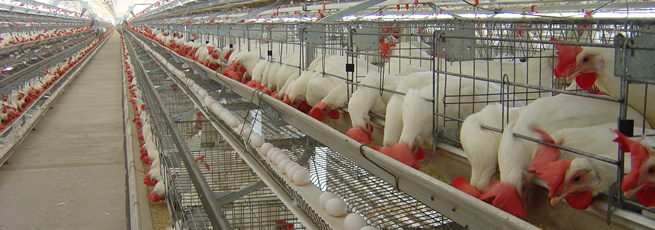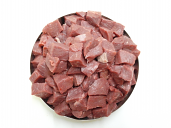| Admissions | Aircraft | Aviation World | Ambassadors | Accreditation | A to Z Degree Fields | Books | Catalog | Colleges | Contact Us | Continents/States | Construction | Contracts | Distance Education | Emergency | Emergency Medicine | Examinations | English Editing Service | Economy and budget | Forms | Faculty | Governor | Grants | Hostels | Honorary Doctorate degree | Human Services | Human Resources | Internet | Investment | Instructors | Internship | Login | Lecture | Librarians | Languages | Manufacturing | Membership | Observers | Public Health | Publication | Professional Examinations | Programs | Professions | Progress Report | Recommendations | Ration food and supplies | Research Grants | Researchers | Students login | School | Search | Software | Seminar | Study Center/Centre | Sponsorship | Tutoring | Thesis | Universities | Work counseling |
| Farm Animals for Human Food |
| Annotation of definition |
| Animals Used for Food |
| Slaughter |
| Dressing and cutting |
| Conditioning |
| Additives |
| Methods of preparation |
Annotation of definition
|
Meat is animal flesh that is eaten as food. Meat is mainly composed of water, protein, and fat, and is usually eaten together with other food. It is edible raw, but is normally eaten after it has been cooked and seasoned or processed in a variety of ways. Unprocessed meat will spoil or rot within hours or days as a result of infection with and decomposition by bacteria and fungi. Most often, meat refers to skeletal muscle and associated fat and other tissues, but it may also describe other edible tissues such as offal. |
Animals Used for Food
| Beef/Cattle |
| Chickens Used for Food |
| Ducks |
| Fish and Other Sea Animals Used for Food |
| Goat meat |
| Meat Sheep Breeds |
| Turkeys |
| Camel |
| Cows Used for Food |
| Bird (others) |
| Buffalo |
| Zabiha Halal Meat Processors |
Beef
|
What Is Cattle Rearing? Why should you consider cattle for livestock? What kind of shelter do cattle need? What equipment do you need for cattle rearing? What is beef? How are cattle raised? Can hormones and antibiotics be used in cattle raising? How is beef inspected? How is ungraded beef different? What is marbling? How much beef is consumed? Why is beef called a “red†meat? What Is Cattle Rearing? Cattle rearing deals with all the aspects of raising cows for beef or milk and can involve multiple tasks. Cattle is a word for certain mammals that belong to the genus Bos. Cattle may be cows, bulls, oxen, or calves. Cattle are the most common type of large domesticated hoofed animals. They are a prominent modern member of the subfamily Bovinae. Cattle are large grazing animals with two-toed or cloven hooves and a four-chambered stomach. This stomach is an adaptation to help digest tough grasses. Cattle can be horned or polled (or hornless), depending on the breed. The horns come out on either side of the head above the ears and are a simple shape, usually curved upwards but sometimes down. Cattle usually stay together in groups called herds. One male, called a bull will usually have a number of cows in a herd as his harem. The cows usually give birth to one calf a year, though twins are also known to be born. The calves have long strong legs and can walk a few minutes after they are born, so they can follow the herd. Cattle have been domesticated for about 9,000 years. They are used for milk, and meat. Why should you consider cattle for livestock? Cows are most often reared whether for meat or dairy, as there are breeds that have been improved gradually over the years to offer better production in beef or milk, but not both together. How to choose the right breed of cattle To rear cattle, the first thing you should decide on is what breed you want to rear. You should know that, for instance, the modern Holstein breed has been modified over the years to produce more milk. It is not, by far, the only breed that has undergone genetic manipulation, and while higher milk production is a result – or beef, for other breeds – there are some issues you must know about. Make sure to cover your cattle’s basic needs What kind of shelter do cattle need? Many traditional breeds can be quite resistant, and that means that not even in winter they will need too much shelter. You can have your cows sheltered in a barn, and it will be enough to go through the winter. While you can let them move freely inside the barn, make sure that they have plenty of straw for bedding. In winter, perform regular cleaning in the barn, so that the cows do not contract any diseases. In case some cows are more aggressive, make sure to separate them from the rest. That can be done by placing them in an enclosure inside the barn, but do not remove them entirely from the herd, as that will only worsen their behavior. Another thing you should remember about cattle is to surround their feeding and living grounds with fences. Sturdy fences are a requirement, as often, cows will lean against the fences and even use them to scratch themselves. What equipment do you need for cattle rearing? You won’t need much equipment for cattle rearing, but the one required needs to be well made. For instance, any handling gear must be made from durable materials. You will also need some milking equipment. In case you don’t want to invest in a cow milking machine, at least you will need some buckets, as well as a stool. Purchase some shovels and wheelbarrows to help you clean up and carry the manure. A cattle through is another good idea, and you should also have an area dedicated as storage for the animals’ feed. Things you need to know about breeding cattle Young cows that have not yet been bred are named heifers. Usually, around the age of 15 months, all cows should be bread, and the normal pregnancy is 283 days long. You must learn the signs that show that a cow is in heat. When that happens, it means that the cow is ready to be mated. The fertilization process can occur naturally, by mating the cow with a bull, or by artificial insemination. Some knowledge on how to assist your cows when giving birth is required. Some clean bedding should be spread on the ground, and anything you need to use should be sterilized. New homestead owners must enlist the help of someone who has helped cows give birth before. Be aware that cows are very protective of their young. If you separate the calf from its mother, for milking purposes, you will notice that the two will show signs of distress and call for one another during the first stage of the separation. Here are further guidelines. |
Chickens Used for Food

|
|
What is poultry? The term poultry actually refers to a variety of bird types raised on farms for food. What are various examples? Chicken Turkeys Ducks Geese Quail Pheasants Ostriches, and many more. What Is a Chicken? A chicken is a bird. One of the features that differentiate it from most other birds is that it has a comb and two wattles. The comb is the red appendage on the top of the head, and the wattles are the two appendages under the chin. These are secondary sexual characteristics and are more prominent in the male. The chicken has two legs and two wings, a fact that influences housing and management. Domestic chickens have essentially lost the ability to fly. Heavy breeds used for meat production cannot do more than flap their wings and jump to a little higher level or move more rapidly along the ground. The lighter-bodied birds can fly short distances, and some can fly over relatively high fences. The feet and shank portions of the legs have scales. Respiration rate is higher in chickens than in larger animals. In general, it can be said that the smaller the kind of bird the faster it breathes. For example, a hummingbird breathes more times a minute than a chicken. The male chicken breathes about 18 to 21 times a minute and the female about 31 to 37 times when they are not under stress. The heart beat of chickens is rather fast, being about 286 times a minute in males and 312 in females in a resting condition. Digestion rate is somewhat rapid in chickens. It varies from 2 1/2 to 25 hours for passage of food depending on whether the digestion tract is full, partially full, or empty when feed is ingested. The chicken's temperature is about 107 degrees to 107.5 degrees F. Chickens are hatched, not born in the truest sense of the word. Chickens are covered with feathers but have a few vestigial hairs scattered over the body. The average consumer does not see these hairs, because they are singed off in the processing plant. The chicken has a beak (or bill) and does not have teeth. Any mastication occurs in the gizzard. Many commercial poultry producers do not provide grit to their chickens, because they feed a ground feed of fine meal consistency that can be digested by the bird's digestive juices. The chicken has pneumatic bones, making its body lighter for flying, if it had not lost the ability to do so. There are 13 air sacs in the chicken's body, again to make the body lighter, and they are a functioning part of the respiratory system. Chickens have comparatively short life spans. Some live to be 10 to 15 years old, but they are the exception, not the rule. In commercial egg production, birds are about 18 months old when they are replaced by new, young stock. It takes close to six months for a female chicken to mature sexually and start laying eggs. Then, they are kept for 12 to 14 months of egg production. After that their economic value declines rapidly, so they are disposed of when they are about 18 months old. Chickens have both white (breast) and dark (legs, thighs, back, and neck) meat. The wings contain both light and dark fibers. There are approximately 175 varieties of chickens grouped into 12 classes and approximately 60 breeds. A class is a group of breeds originating in the same geographical area. The names themselves  Asiatic, American, Mediterranean, and so on  indicate the region where the breeds originated. Breed means a group which possesses a given set of physical features, such as body shape, skin color, carriage or station, and number of toes. Variety is a category of breed and is based on feather color, comb, or presence of a beard and muff. Thus, the Plymouth Rock may be Barred, White, Buff, or one of several other colors. The Rhode Island Red may have either a single or rose comb. In each case, the body shape and physical features should be identical. Breed and variety tell little about the qualities of good producing stock. Strain, however, does. A strain is a group or breeding population within a variety or cross that has been bred and developed by a person or organization to possess certain desirable characteristics. Many commercial strains exist, such as Babcock, DeKalb, Hyline, and Shaver, that have been bred for specific purposes. Chickens are classified by sex and age, too. Although these terms tend to vary considerably, depending upon whether they are being applied to exhibitions, or commercial poultry production. Cockerel is a male chicken under one year of age; cock or rooster is a male more than one year old; pullet is a female under one year, and hen is a female over one year of age. When chicks are first hatched, they may be separated by sexes and are then called sexed chicks. If they have not been separated, they are known as straight-run chicks. In market terms, a broiler or fryer is a young meat-type chicken that can be cooked tender by broiling or frying and usually weighing between 2 1/2 and 3 1/2 pounds. A roaster is a young meat-type chicken that can be cooked tender by roasting and usually weighing 4 pounds or more. A stewing chicken, hen, or fowl is a mature female chicken, often the by-product of egg production, with meat less tender than that of a roaster and can be cooked tender by stewing or a similar method. Chicken Breeds

White Leghorn Chicken Rooster  White Leghorn Chicken How are your chickens raised? On pasture, indoors, confined? Are they caged? Are your hens force molted? What are your hens fed? How much time do your hens spend outdoors each day? Are your hens given antibiotics? Here are further guidelines. |
Zabiha Halal Meat Processors
|
Safe Minimum Internal Temperature Chart Storing Meat in Your Refrigerator Receiving Storage Thawing Cooking Cooling Potentially Hazardous Food Holding Reheating More Useful Temperatures Do not cover the food until it has cooled to below 41°F. Once food cools to 41°F, you can place food in a larger container and cover. Beef Storage and Handling Guidelines Raw Beef Beef should be chilled immediately after it is received. Since meat freezes at 28F and microbial growth increases rapidly above 40F, it should be stored between 28F and 32F. Beef should never be held at temperatures above 40F for more than 2 hours because as bacteria grow, beef quality deteriorates rapidly. The shelf-life of vacuum-packaged fresh beef primals and subprimals is generally reported as approximately 35-45 days, with longer shelf-life of 70-80 days possible when refrigeration is optimally low (28-32F). Storage life decreases to 3-5 days for whole muscle beef and 2-3 days for ground beef once the package is opened. Frozen Beef When beef is being frozen, the rule of thumb is "the faster the better." When beef is frozen quickly, small ice crystals are formed. Slow freezing produces larger crystals. Large ice crystals tend to rupture the muscle tissues and allow water and nutrients to drip out when the beef is defrosted, causing excessive purge which results in a tougher cut of meat. It is also important to remove air from the package prior to freezing and to use packaging material appropriate for freezer storage to prevent freezer burn. Beef frozen by the packer or processor results in a high quality product because it is generally frozen quickly at very low temperatures. Beef frozen in this manner has less opportunity for structural changes to occur than beef that is shipped fresh and frozen later. Beef is commercially frozen at -50F. Once beef is frozen the ideal storage temperature is 0F or lower. Frozen beef should be defrosted at refrigerator temperatures for 15-24 hours. Beef should never be defrosted at room temperature or in warm water. If there's not enough time to properly defrost the beef, it can be defrosted in a microwave oven and cooked immediately. |
 |
 |
 |
|
Lamb Leg (Stew Cut) Lamb Shoulder Lamb Chops Lamb Ribs Lamb Liver and Kidney Ground Lamb Lamb Leg Bones Lamb Bones Boneless Lamb (Stew Cut) |
|
Goat Leg (Stew Cut) Goat Shoulder Goat Chops Goat Ribs Goat Liver and Kidney Ground Goat Goat Bones Boneless Goat (Stew Cut) |
| Fish Breeds |
Last Updated: July 1, 2022
